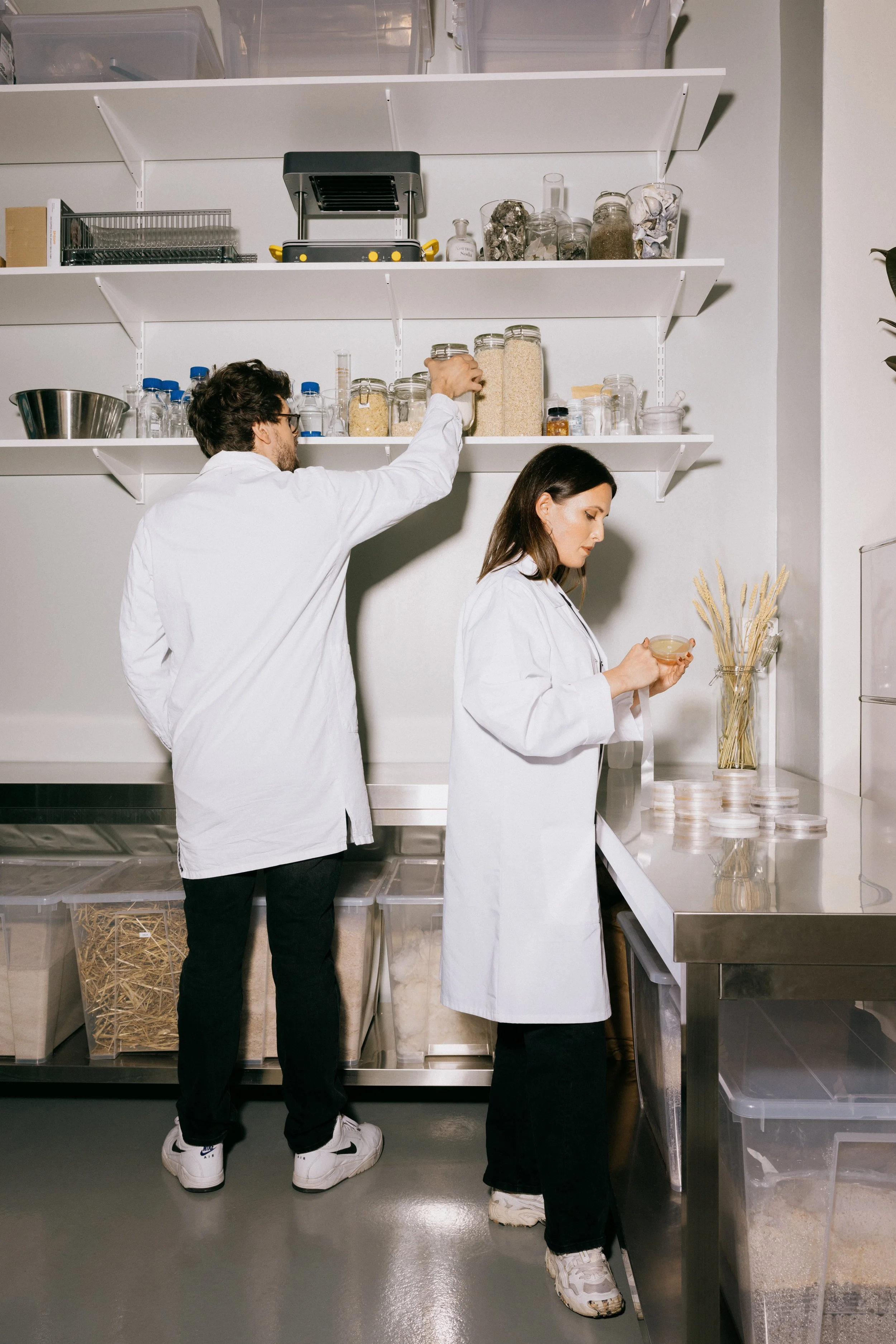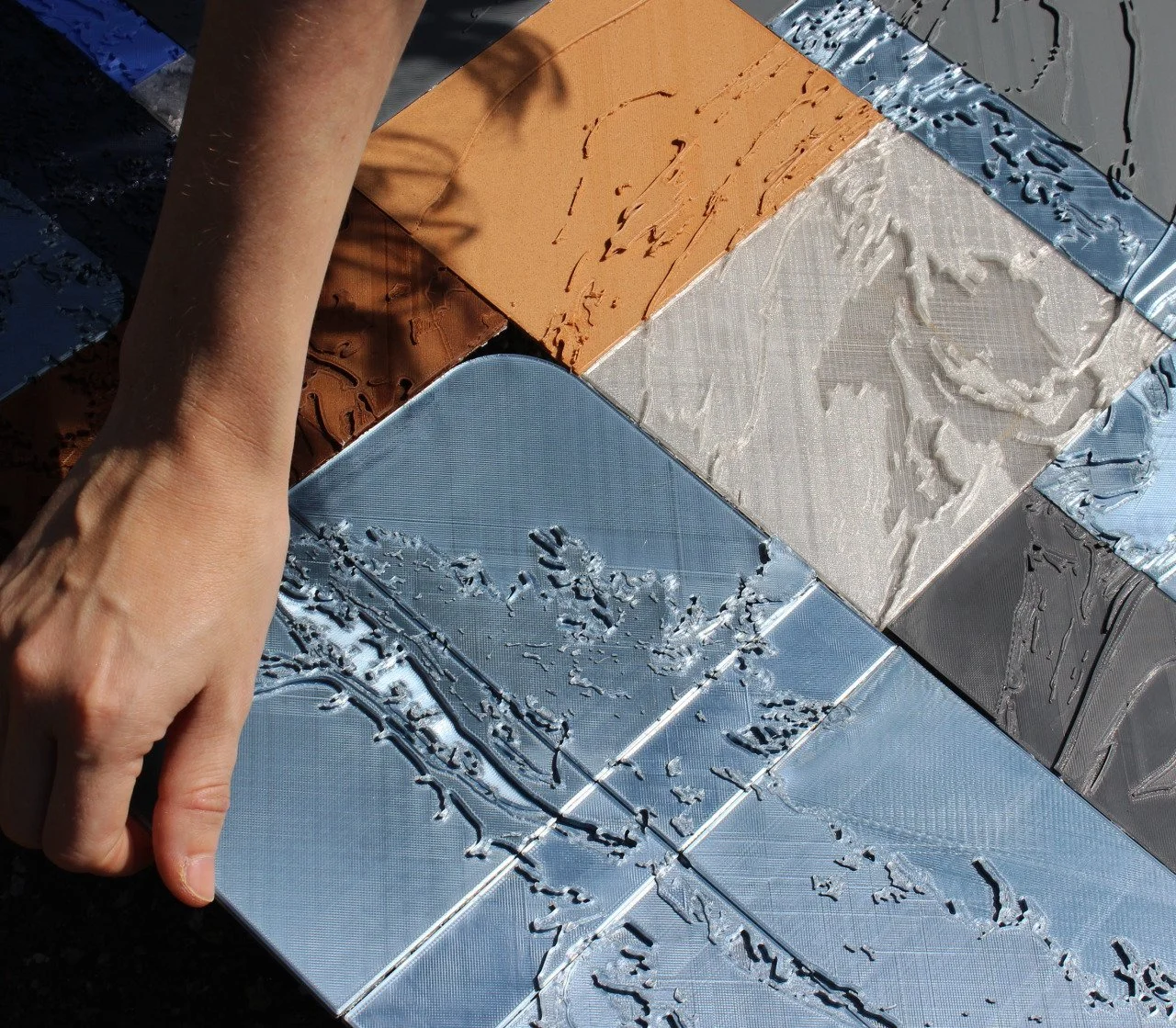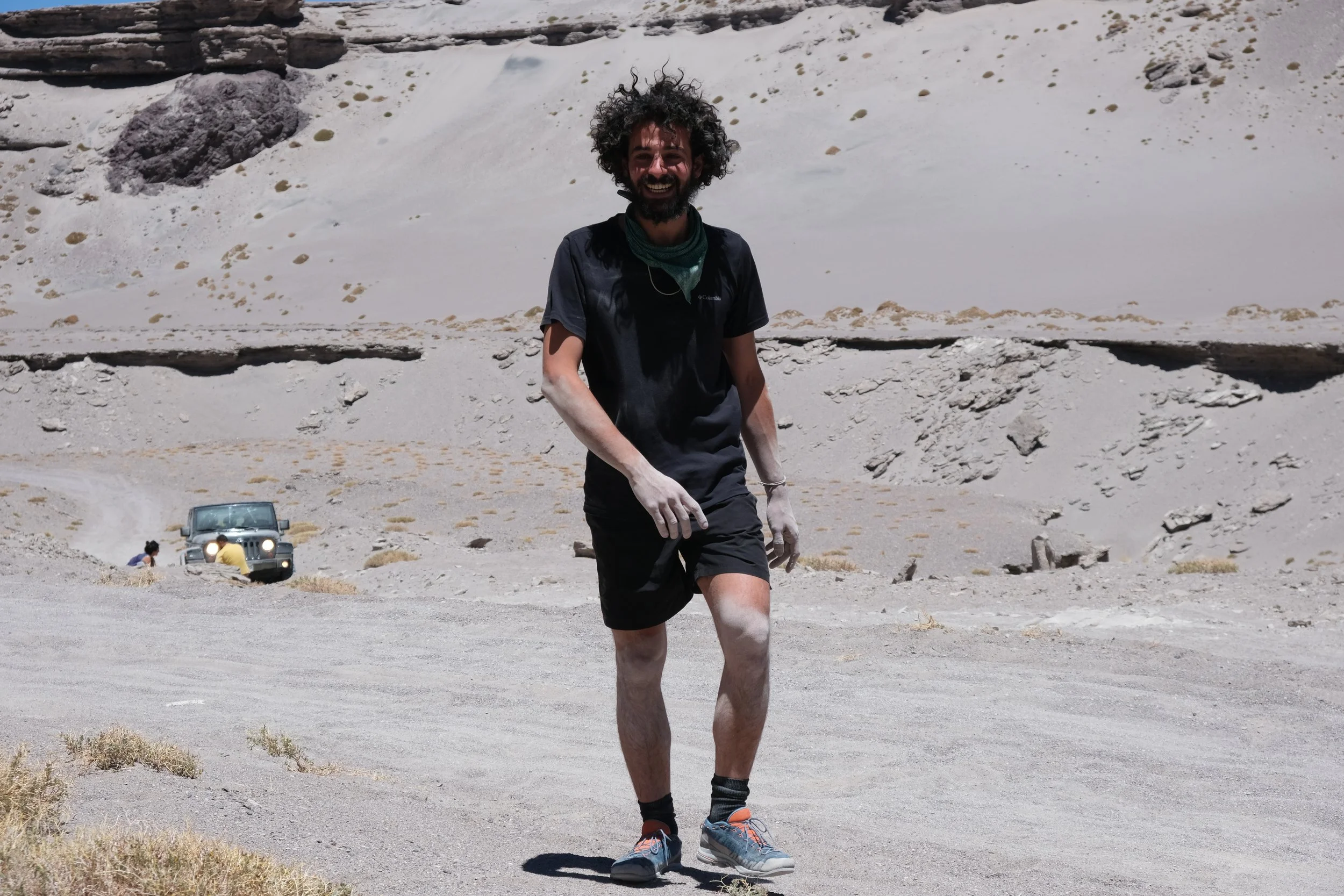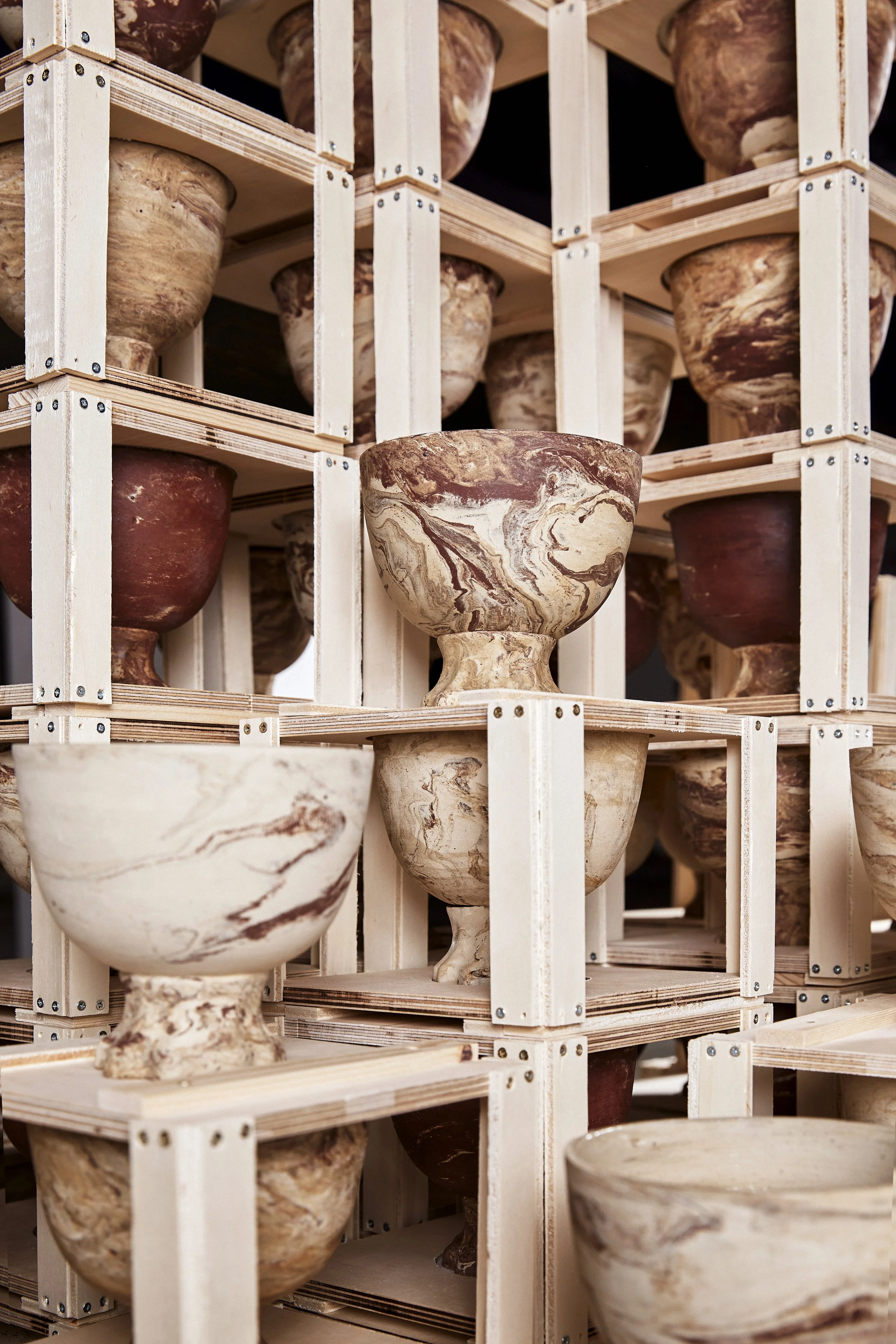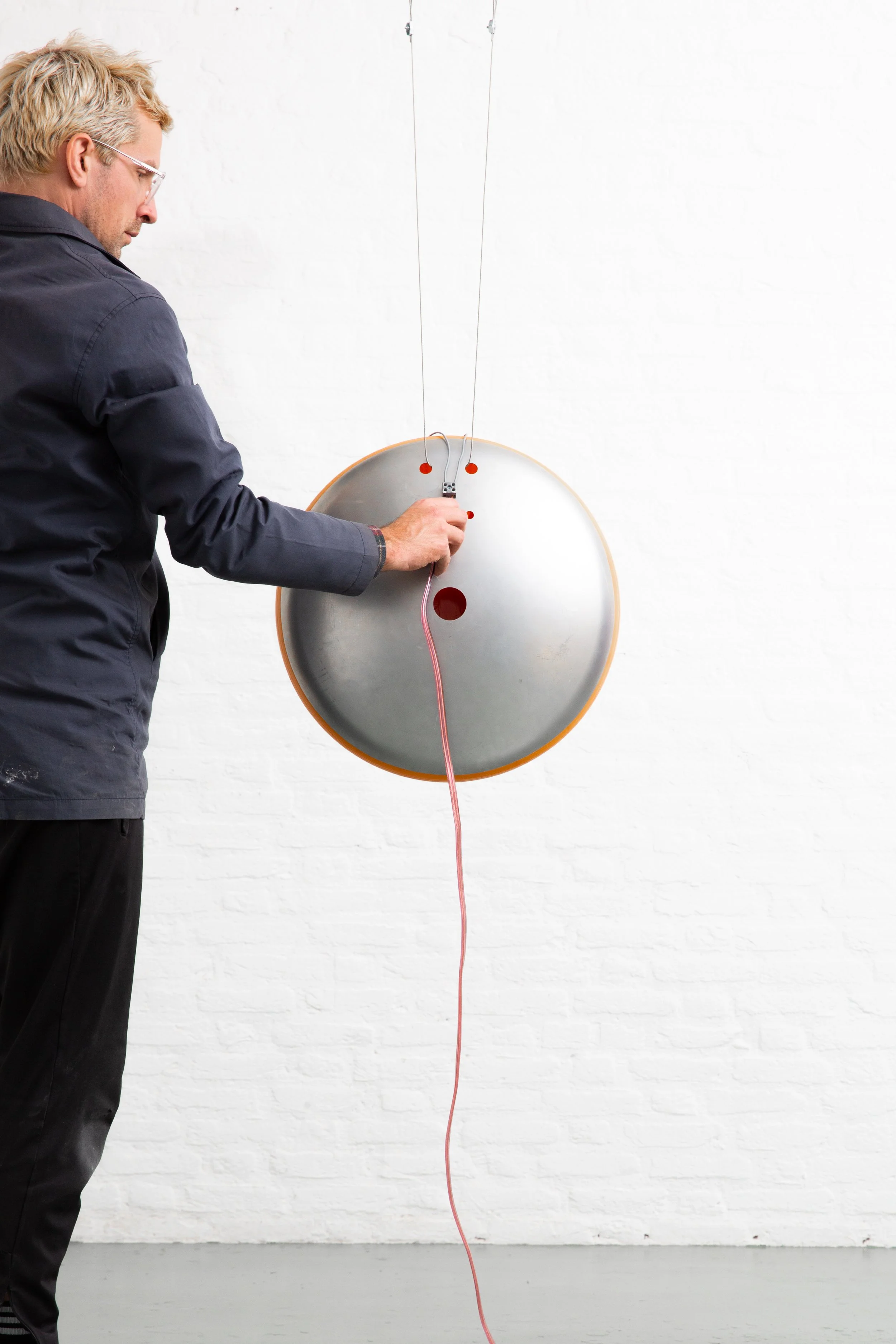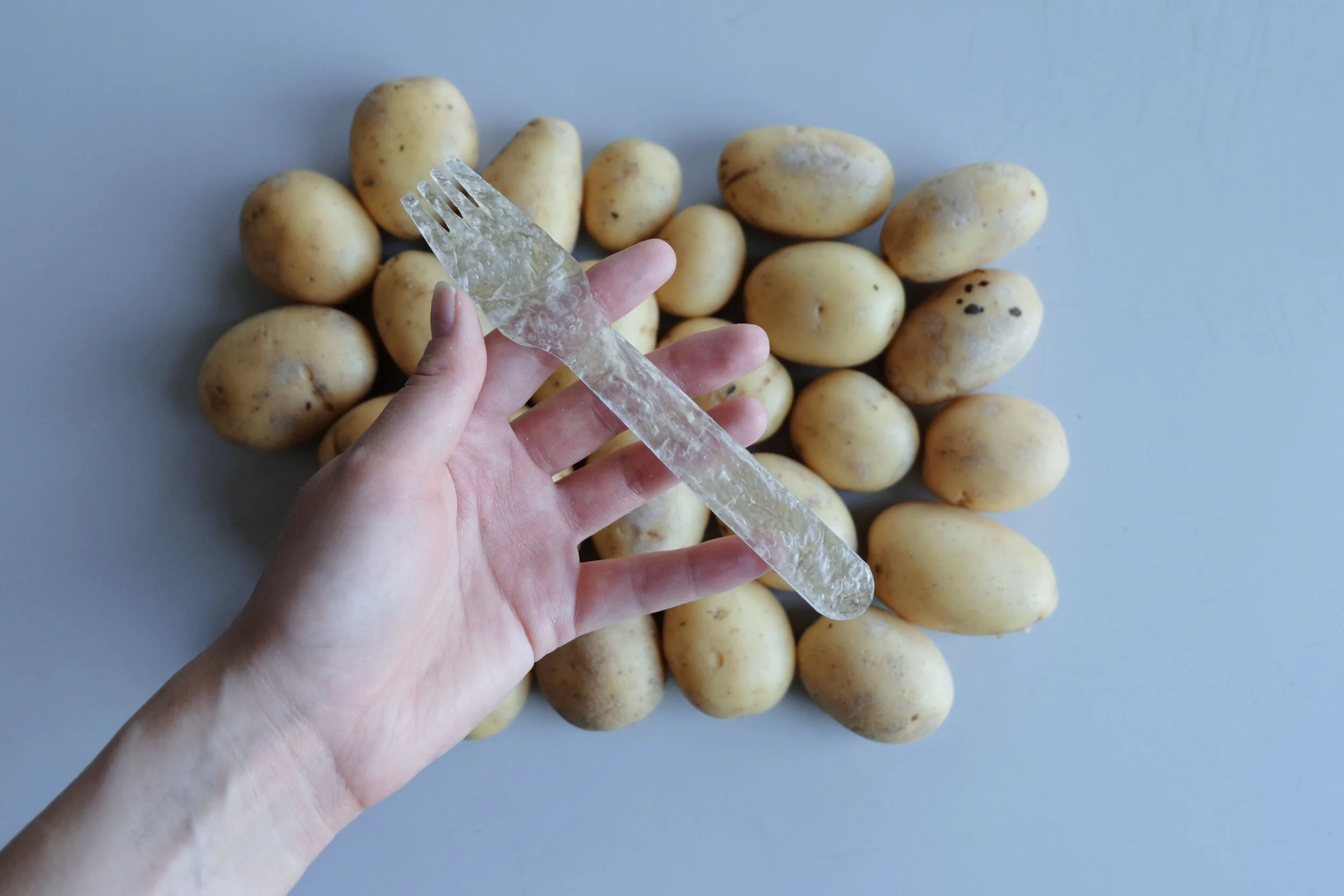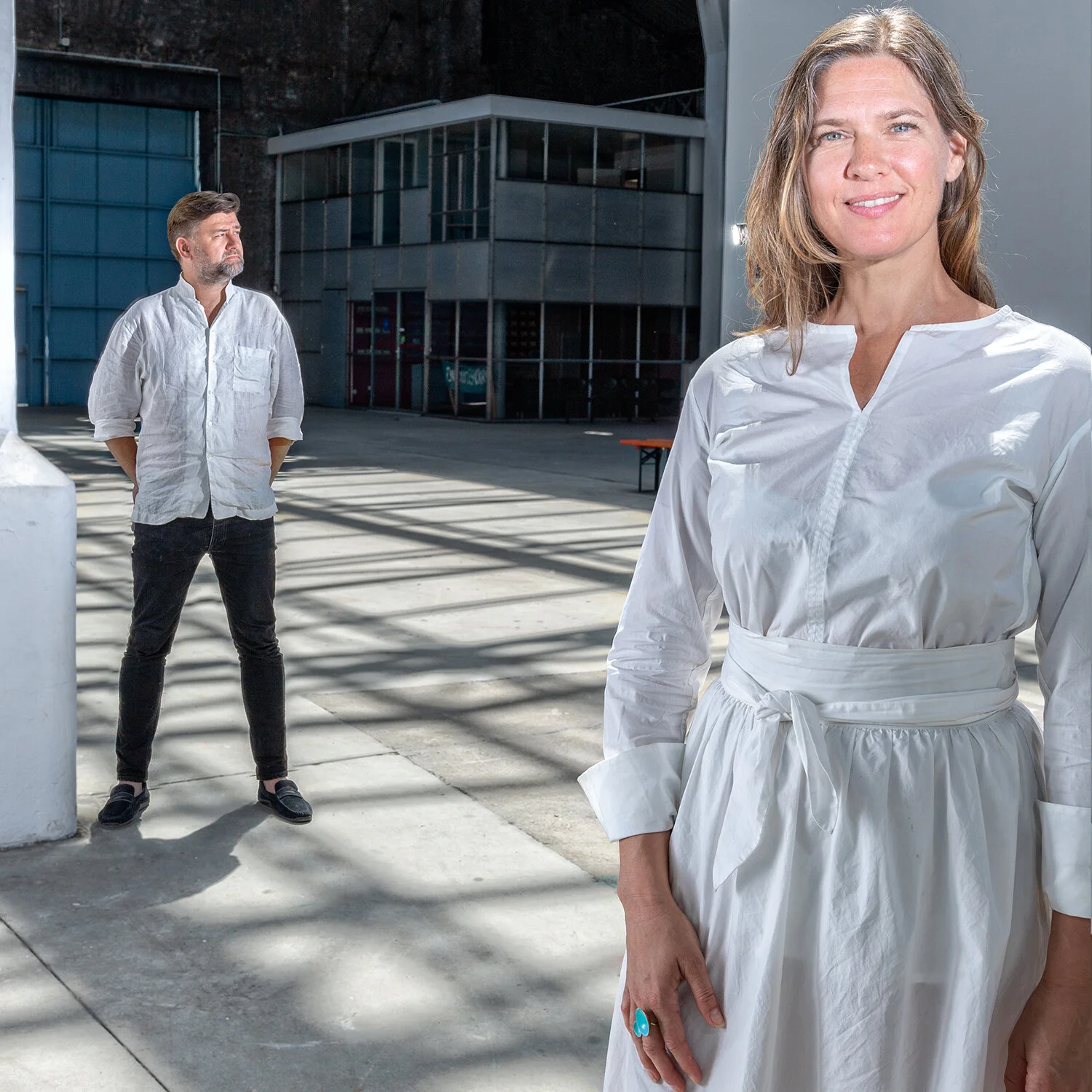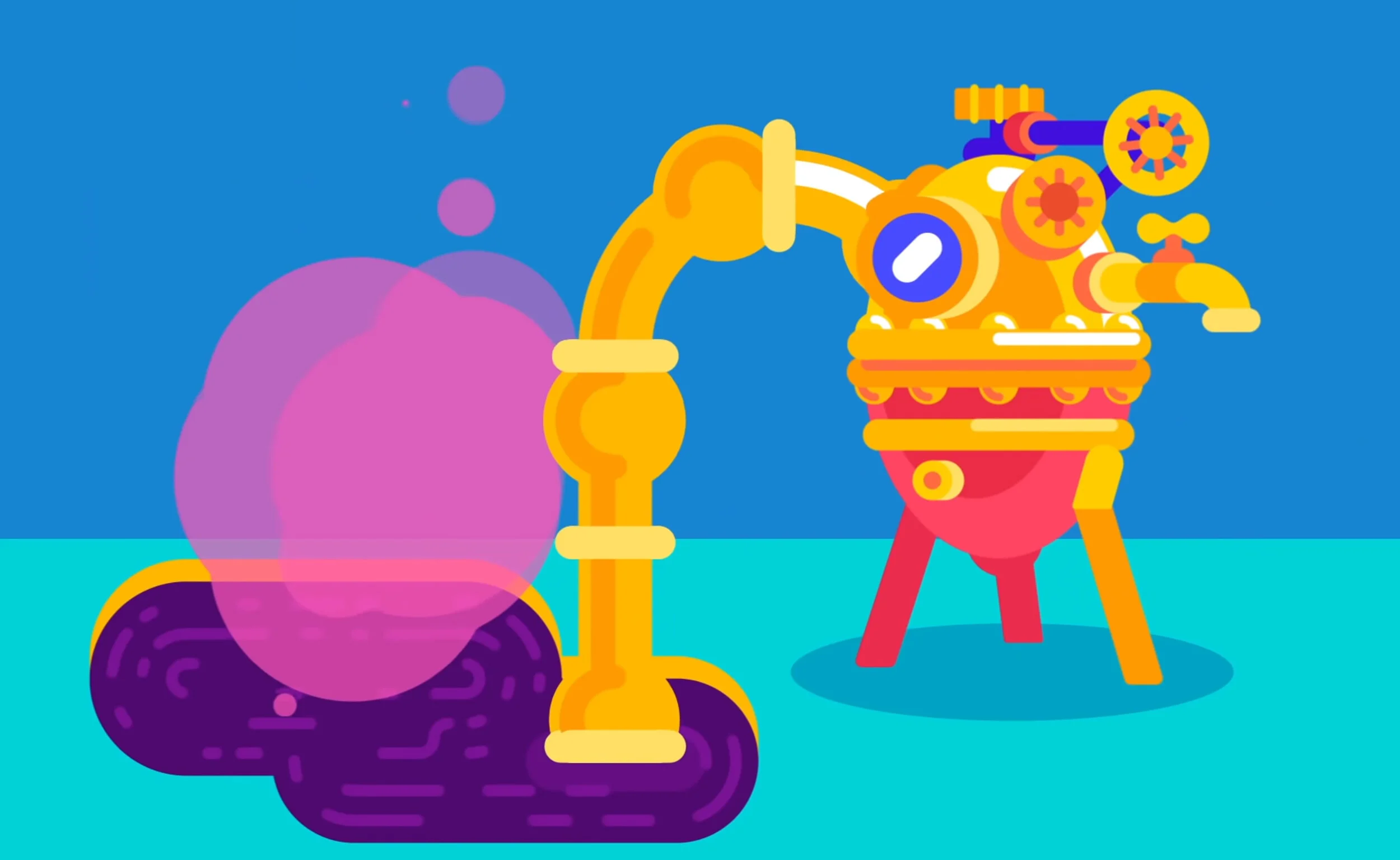Leo Maher on legend, queering canons and the agency of the archiver
In a mini-series of interviews, Maren Bang from the Elementa crew presents the work of some of her fellow alumni from Design Academy Eindhoven.
British designer Leo Maher weaves together narratives and symbolic references of both the past and present based on his research into material culture. His work sheds new light on themes previously subject to biased appropriation and stereotypes, reformatting archives into new physical pieces.
#Maren: Leo - please tell a bit about yourself and what led you to your current practice.
#Leo: I grew up in England originally in London and later a small seaside Village. Like a lot of creatives, my Mum often harks back about me taking everything apart as a kid, trying to understand what things are made of. And I remember playing with water a lot. She used to wallpaper the entire kitchen with our drawings, looking back at pictures of that kitchen, it’s like looking back at an origin story. It’s almost like she was charting our own private histories - a medium in how to witness a development.
At college I’d do Life-Drawing classes and Product Design and Philosophy and not really know how to make them align. It felt like oceans that refused to merge, the frictions between disciplines where in reaching out, pluralism always seemed a transient fantasy boat caught in a rip. It took me some time to find the right pirate ship.
I studied 3D-Design at Kingston School of Art in London where this kind of pluralistic dynamism was really at the core. Looking back, it was definitely this dynamic that led me away from the UK, where I used to feel that familiar sense of discipline made everything seem unnecessarily bordered; unwilling to emulsify. Kingston really gave me confidence in this approach and navigated me towards the Design Academy Eindhoven where I was really able to cultivate and bring multiple parts together.
“Slug Likes Shiny” 2022
ceramic, terracotta, glaze, resin, PLA, nickel-plating, aluminium, glass, light fixture
Now, an interest in the intersect takes an integral part in my practice; the finding of a common ground. I’m reminded that the water I grew up near, wondering what was on the other side of, would always be connected at both ends.
There’s something from a favourite poet that rings of similar virtue:
“Sometimes, when I’m careless, I believe the wound is also the place where the skin reencounters itself, asking of each end, where have you been?”
Ocean Vuong - “On Earth We’re Briefly Gorgeous”
Design can be a great tool to create the discourse and change needed for the dissolution of some more hegemonic borders- and create those encounters; to queer canons.
#Maren: And how do you see your areas of interest aligning in your practice today?
#Leo: I like this idea that ornament is able to speak a language of communication that is so rich, ancient and interconnected. I really feel it’s our debt as designers to recognise the heritage of the forms and materials that we’re dealing with, nothing comes without baggage. It’s how we choose to load the cabin, to manoeuvre what were stowing, it’s the agency we take in constructing our narrative- in having our voice. I guess we’re just baggage handlers. And it’s really not just about trendy looking suitcases.
There’s a rich theory to symbols and codes; our past material cultures and contexts have framed and programmed the way we see the world and result in what is registered when we perceive an image. This principle notes how design must “operate from a symbolic register”. Every object, form and shape we perceive is unavoidably saturated with internal connotations that lead our understanding of the object. It’s important that we acknowledge that this phenomenon is active in both the practitioner and the beholder and that the key to symbolism is a recognition of this very spectacle. We have to understand Design as much about narrative as it is about materiality- the inseparability.
#Maren: Has your work changed thematically throughout your studies?
#Leo: I was working with machine learning algorithms a few years back, it was a project using VPN’s to collect ‘authentic’ oriental imagery. I think this process of curating and processing archives into new imagery really stuck with me. The agency of the archiver.
“Inauthentic Orientals”, 2020
3d printed PLA
In most of my pieces, each material element represents a particular narrative element. I like this idea that the beholders share allows for facets of narrative to be remembered and shared, much similar to the practising of legend. If the pandemic has taught us anything, we can surely now visualise the spread of matter capable of reshaping cultures and societies. In each work, ideas and their representative forms are clustered- the cluster itself forming the image- with little hierarchy. The work relies on the overall impression to express its integrity, whilst, much like legend, each nodule acts as a figurative seed in the wind.
“Homo-delicatus”, 2021
steel, terracotta, ceramic, glaze, concrete, 3d printed pla
“Gentlemen of the Backdoor, 2021
steel, ceramic, glaze, 3d printed PLA, silver leaf, walnut, gold-leaf
#Maren: How would you describe your methodology today?
#Leo: Regarding methodology, where the ‘historical method’ traditionally draws on primary sources, secondary sources and material evidence, my research practice is less about using reason to seek validity and fact, and more about archiving and indexing. The prerogative is to collect histories, narratives and legends, noting that even the fictitious bears value and sentiment and the scope to explain masses about the paradigm of a particular people or time.
Legend, Folklore and Myth often play a large part in the research. In collecting histories, producing a record; a string of events that can help us explain a certain evolution of things, we often discover ourselves on the end of the string we're tracing. In doing so, we not only teach of where we come from, but of the here and the now. The work acts on the maxim that ‘past realities allow us to contextualise the present through design’. In many ways this contextualisation helps give shape to the future, we perpetuate a field of knowledge that we find of virtue; we not only queer the theoretical cannon but it’s direction also.
“Much Alike Statues”, 2021:
steel, ceramic, glaze, 3d printed PLA, resin, plaster, walnut, mahogany, beech, pine, ply, laser-cut abalone veneer, pigment, gold leaf, plastic gems, nail polish
Throughout the process different archives are formed from the data, organised through time, language, style of narrative or politics. From here, the images and symbols are physically cut and collaged together through print and illustration until physical pieces are frankensteined.
I think there’s something really interesting happening, where our digital behaviours and practices are being adopted by the physical. Where some of the ways we approach and manoeuvre information and content in the digital realm is informing us how to shape material and narrative. It’s like we’re adapting to iterate in fragments.
#Maren: Can you tell us about your graduation project and how you applied the thoughts and methods above in your process?
#Leo: My graduation project from the Academy was a series of works that attempt to literate a particular history of homosexuality. Each piece of the series explores the heritage of identifiers, legends, euphemisms, deviant behaviours and signalling mechanisms, noting how they transcend cultures and societies before ending up woven into the cloth of modern gay life. They work as a kind of timeline, where the narrative elements are organised in some sort of chronology, but equally try to communicate something a lot more chaotic and a-historical at the same time.
“Articulated Matter” , 2022
ceramic, glaze, nickel plated 3d prints, resin, pine, terracotta, copper powder, polymer clay, plastic gems, steel
The series emphasises how many of these narratives fold and unfold themselves throughout time and through different contexts. You can begin to recognise particular qualities, roles and behaviours develop as consequence to particular paradigms. Often I was using the materials themselves to give the ‘air’ of a particular period- where unglazed terracotta bowls nod towards excavated Roman pottery and white, black and green glazed tile-work are an ode to the public bathrooms of the Victorian period.
I’m usually employing materials, forms and techniques on two criteria. A utilitarian fashion- where materials and techniques are used for their ability to produce particular shapes. And in respect of the historical and sociological significance of each material, craft, process or technique.
“Articulated Matter”, 2022
ceramic, glaze, nickel plated 3d prints, resin, pine, terracotta, copper powder, polymer clay, plastic gems, steel
In regards to materiality, the series avoids materials and aesthetics which might be more typically associated with contemporary queerness. A lack of glitter, sequins and technicolour pilots towards the materials of more traditional iconography- gold and silver luster, walnut and mahogany. I wanted to dress these once unconventional narratives in the skin of the conventional, a skin that regardless of it’s accomplishment, it was never considered worthy of.
Check out Leo´s Instagram to see more of his work and upcoming projects!













